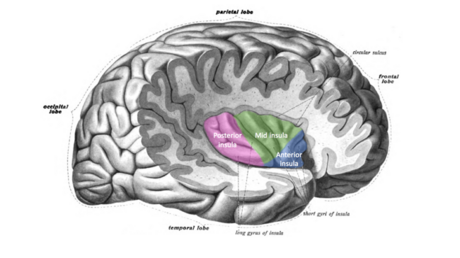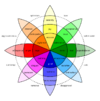Biology:Homeostatic emotion


Homeostatic emotion (or primordial emotion, or homeostatic feeling, or homeostatic affect) is a class of feelings (e.g., thirst, pain, fatigue) evoked by an internal body state. A homeostatic emotion drives behavior (drinking, withdrawing and resting in these examples) aimed at restoring the body to its ideal state.[1][2][3]
Derek Denton uses the term "primordial emotion" and defines it as "the subjective element of the instincts, which are the genetically programmed behaviour patterns which contrive homeostasis. They include thirst, hunger for air, hunger for food, pain, hunger for specific minerals etc. There are two constituents of a primordial emotion—the specific sensation which when severe may be imperious, and the compelling intention for gratification by a consummatory act."[4]
Denton includes sexual desire in this class[5] and distinguishes two classes of feelings: these primordial emotions ("imperious states of arousal and compelling intentions to act" driven by activation of interoceptors and involving ancient, lower brain regions such as the medulla, midbrain and hypothalamus), and the classic emotions such as anger, fear and love, driven by distance receptors (vision, hearing, olfaction) and mediated by higher, more recently evolved brain regions.[6]
Jaak Panksepp called this class of feelings "homeostatic affect." He recognised it as one of three primary classes of affect: sensory affect (e.g., touch, warmth), homeostatic affect (e.g., thirst, fatigue) and emotional affect (e.g., anger, fear).[7]
In his earlier work Antonio Damasio used "primordial feeling" but he now prefers the term "homeostatic feeling" for this class. "The only other category of feelings I recognize is 'emotional'. Emotional feelings are experiences of emotional states. Homeostatic feelings are feelings such as hunger, thirst, pain, desire, wellbeing, as well as the continous feelings of life itself."[8][9]
Bud Craig uses "homeostatic emotion" for this class of feelings and has found that humans and anthropoid primates form an image of all of the body's unique homeostatic sensations in the brain's primary interoceptive cortex (located in the dorsal posterior insula). This image is re-represented in the mid- and anterior insula, and the anterior insula's image (modulated by input from cognitive, affective and reward-related circuits) embodies conscious awareness of the whole body's homeostatic state. A sensation re-represented in the anterior insula and that sensation's related motivation hosted in the anterior cingulate cortex form a homeostatic emotion.[10]
References
- ↑ Craig, A.D. (Bud) (2003). "Interoception: The sense of the physiological condition of the body". Current Opinion in Neurobiology 13 (4): 500–505. doi:10.1016/S0959-4388(03)00090-4. PMID 12965300. http://www.jsmf.org/meetings/2007/oct-nov/CONB%20Craig%202003.pdf.
- ↑ Derek A. Denton (8 June 2006). The Primordial Emotions: The Dawning of Consciousness. Oxford University Press. p. 7. ISBN 978-0-19-920314-7.
- ↑ Craig, A.D. (Bud) (2008). "Interoception and emotion: A neuroanatomical perspective". in Lewis, M.; Haviland-Jones, J.M.; Feldman Barrett, L.. Handbook of Emotion (3 ed.). New York: The Guildford Press. pp. 272–288. ISBN 978-1-59385-650-2. https://books.google.com/books?id=DFK1QwlrOUAC&pg=PA272. Retrieved 6 September 2009.
- ↑ "The role of primordial emotions in the evolutionary origin of consciousness". Conscious Cogn 18 (2): 500–14. June 2009. doi:10.1016/j.concog.2008.06.009. PMID 18701321.
- ↑ Denton, Derek A. (2006) (in en). The Primordial Emotions: The Dawning of Consciousness. Oxford University Press. ISBN 978-0-19-920314-7. https://books.google.gr/books?id=mPBFAAAAYAAJ&newbks=0&hl=en&redir_esc=y.
- ↑ Jablonka E & Ginsberg S (2006) Book review. Journal of Consciousness Studies, 13(6) pp. 97–122
- ↑ Ellis, Ralph D.; Zachar, Peter (2012) (in en). Categorical Versus Dimensional Models of Affect: A Seminar on the Theories of Panksepp and Russell. John Benjamins Publishing. pp. 244. ISBN 978-90-272-4157-3. https://books.google.com/books?id=KtCbU6459jQC&pg=PA244.
- ↑ Ratcliffe, Matthew; Stephan, Achim (2014). Depression, Emotion and the Self. London: Andrews UK. ISBN 978-1845407469.
- ↑ Damasio, Antonio; Damasio, Hanna (2022-05-30). "Homeostatic feelings and the biology of consciousness". Brain: awac194. doi:10.1093/brain/awac194. ISSN 0006-8950. https://doi.org/10.1093/brain/awac194.
- ↑ Emeran A. Mayer (August 2011). "Gut feelings: the emerging biology of gut–brain communication". Nature Reviews Neuroscience 12 (8): 453–466. doi:10.1038/nrn3071. PMID 21750565.



